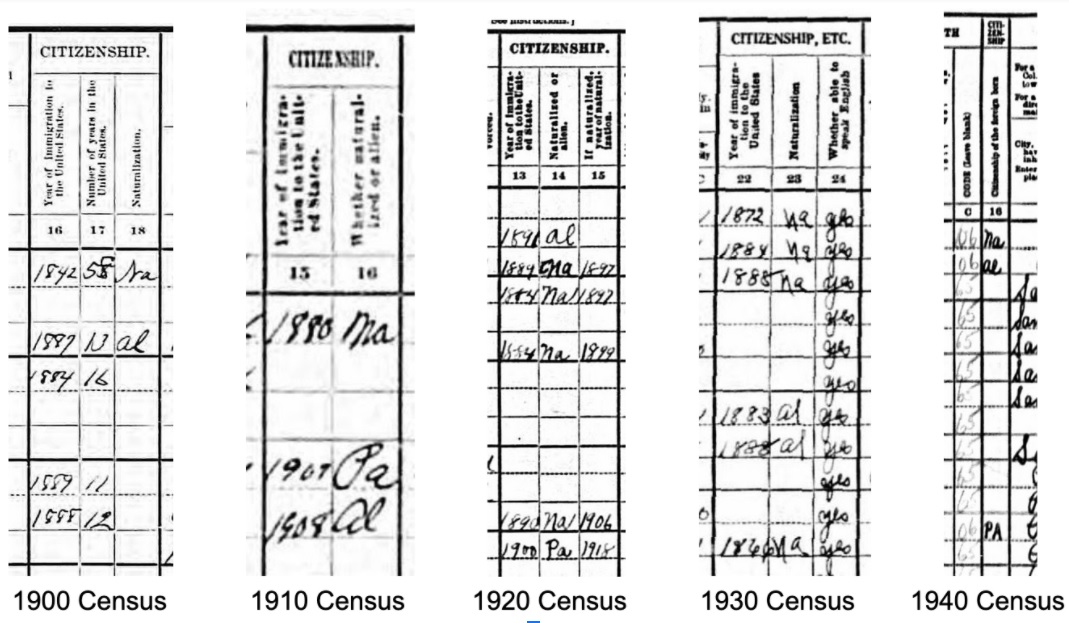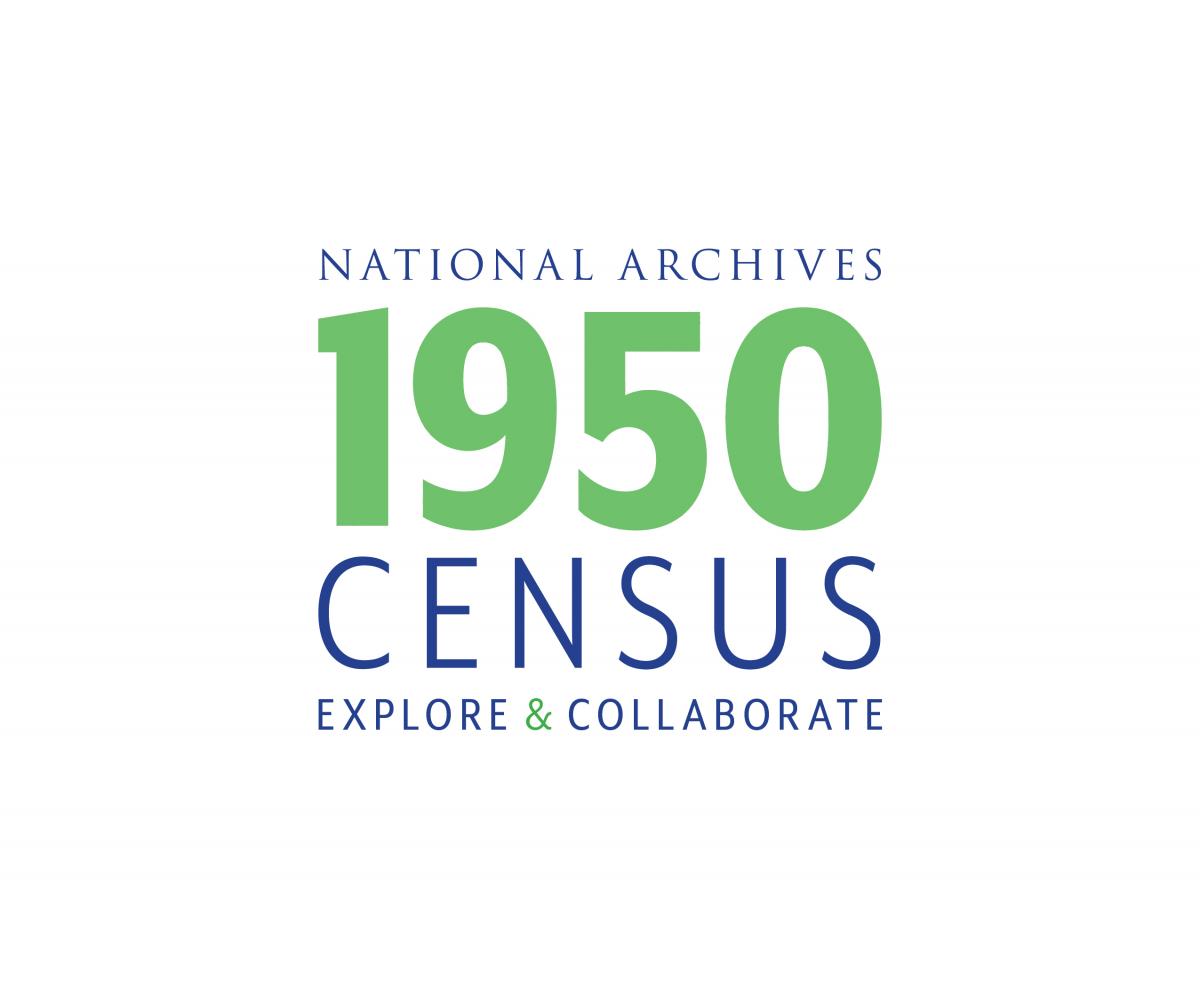
Standout Census Stories: An Archivist Untangles Immigration Records Using Leads from the Census
By Editorial Staff | National Archives News
WASHINGTON, February 24, 2022 — As the Subject Matter Expert Archivist for immigrant records, I often turn to federal census records as a preliminary tool for helping researchers begin documenting their immigrant ancestors. The 1900–1940 censuses are especially fruitful due to the nature of both immigration- and naturalization-related clues they can provide.
A year of immigration is recorded for individuals in the 1900–1930 censuses. Taken with a grain of salt (the date was often being remembered many decades removed, and may have been reported by an individual who didn’t have complete knowledge), this date can help a researcher narrow the focus of their search for a passenger manifest or border crossing record.
I have found it is important to locate an individual in multiple census years, if possible. The immigration date may be recorded differently in different years, but taken together, the dates can provide a window of time appropriate for searching. I had a researcher whose ancestor had recorded their immigration year as 1884 in the 1930 federal census, 1885 in the 1925 Iowa state census, 1882 in the 1920 federal census, and the 1910 federal census pointed to the family arriving in the mid-1880s. Though the years did not match between the various census records, we were able to narrow focus for possible arrival records to the early 1880s and ultimately found the family arriving at New York in 1883.
From the 1900–1940 censuses, a naturalization status is recorded for individuals. I (again) suggest that researchers take the status indicated with a grain of salt, but it is certainly a good starting point for determining whether an ancestor may have pursued U.S. citizenship. The answers for naturalization status were recorded as:
Al = Alien
Pa = First Papers
Na = Naturalized (Second Papers)
If “Pa” or “Na” are recorded, that is a great jumping-off point for a researcher to consider naturalization records as a next step in their search. Narrowing the window of time when citizenship may have been obtained is helpful, and I normally suggest that researchers search backward chronologically in the census records. I worked with a researcher who had found that their ancestor recorded “Na” on the 1940 and 1930 censuses, “Pa” on the 1920 Census, and “Al” on the 1910 and 1900 censuses. This indicated to me that naturalization likely occurred between 1920 and 1930. Looking at where the family resided during those years, I was able to connect the researcher with the correct NARA field office to request a search for the Petition for Naturalization (and associated records) within our federal court holdings.
I’ve interacted with many researchers who worry that locating only an “alien” status over multiple census years means the end of the road for their immigrant record search. I love working with our Alien File (A-File) holdings at NARA, so I am honestly excited when a researcher comes to me saying that their ancestor is noted as “Al” in all of the census records they’ve found. Knowing that an ancestor was still maintaining immigrant status in the United States in 1940 means that they likely participated in the 1940 Alien Registration that took place from August through December that year. During the registration process, individuals were assigned Alien Registration Numbers that were later used by the Immigration and Naturalization Service (INS) as they created A-Files to track the immigration and inspection process for immigrants as well as their subsequent interactions with the federal government.
Connecting researchers with their immigrant ancestors is part of my day-to-day work at NARA, and I enjoy helping researchers get their footing in our holdings through the federal census.
Read a blog post by Claire Kluskens, subject matter expert (SME) for Genealogy and Census Records with the Office of Research Services, for more information on how census records may help locate immigration and naturalization records, and visit NARA’s Immigrant Records page to connect with the records.

 Read previous Standout Census Stories:
Read previous Standout Census Stories: